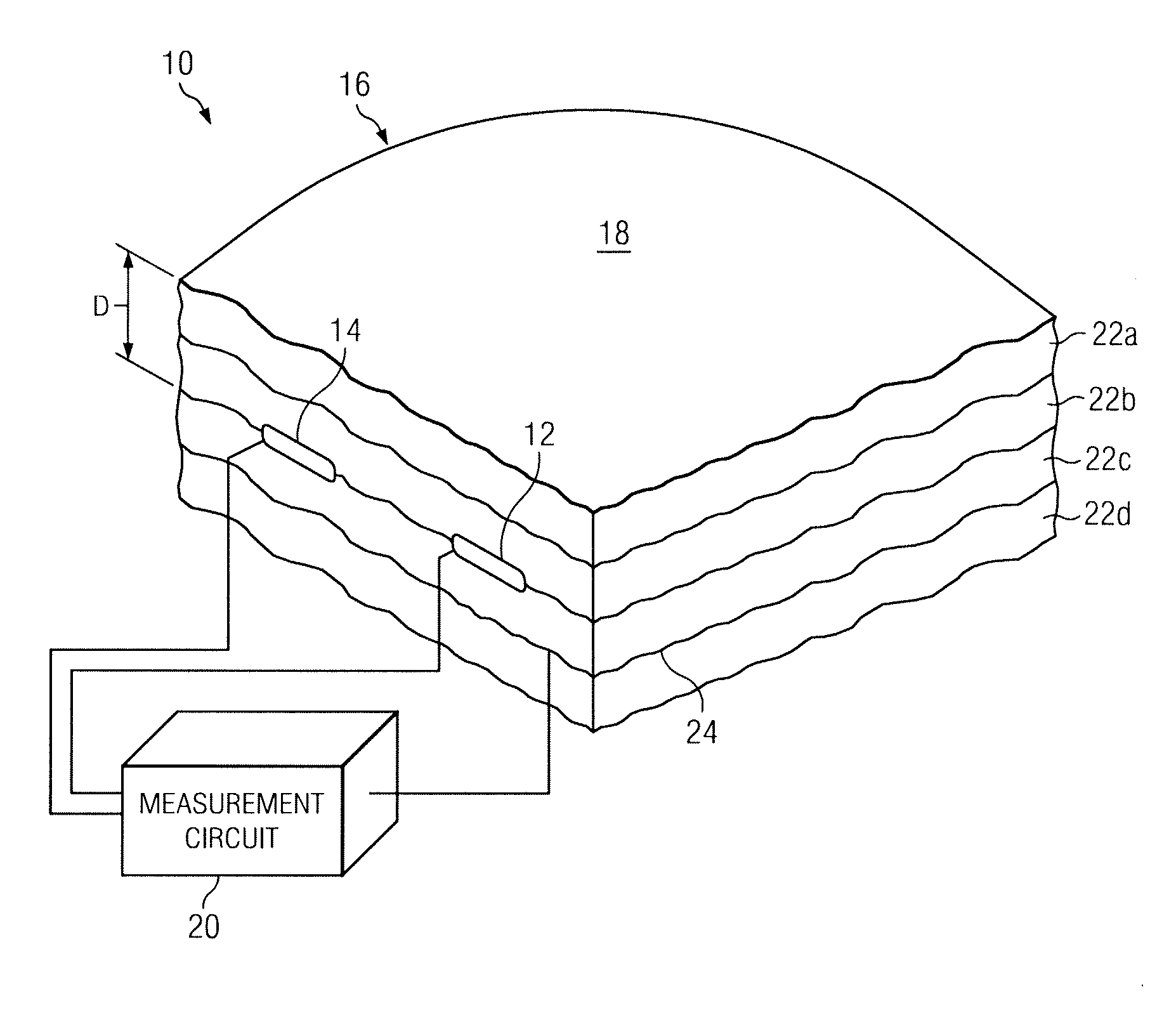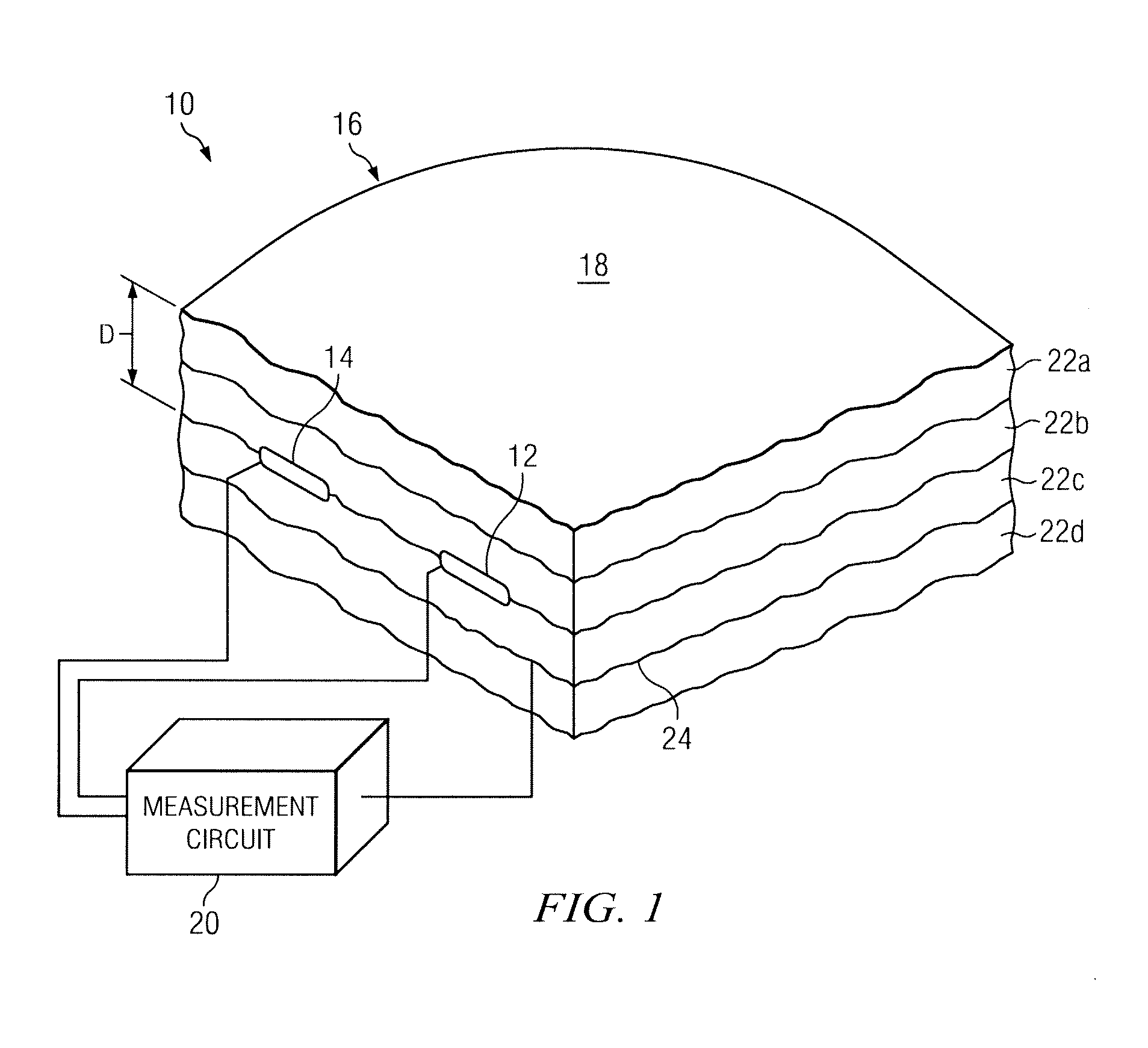Apparatus for Remotely Measuring Surface Temperature Using Embedded Components
a technology of embedded components and sensors, which is applied in the direction of instruments, heat measurement, calorimeters, etc., can solve the problems of affecting incorporating environmental coatings which are not well suited for placing temperature sensors directly on their surface, etc., and achieve accurate indication of surface temperature, accurate fluid temperature measurement, and hammer the performance of other associated mechanisms
- Summary
- Abstract
- Description
- Claims
- Application Information
AI Technical Summary
Benefits of technology
Problems solved by technology
Method used
Image
Examples
Embodiment Construction
[0013]As previously described, the relatively small thickness of temperature sensors has enabled measurement of temperatures at relatively small regions of interest. There are some devices, however, for which temperature measurement using these temperature sensors are still generally impractical. For example, placement of a temperature sensor directly on an outer surface of a radome may be generally impractical due to environmental coatings on its outer surface. A radome is a type of covering that may be placed over an antenna for shielding the various elements of the antenna from the environment. It may be desired in some cases, however, to measure the outer surface of the radome. During inclement weather conditions, a layer of ice may form on the outer surface of the radome that may hamper proper operation of the antenna. A temperature sensor may be used to monitor the outer surface for icing conditions; however, this sensor is unprotected and, therefore, at risk of damage due to ...
PUM
 Login to View More
Login to View More Abstract
Description
Claims
Application Information
 Login to View More
Login to View More - R&D
- Intellectual Property
- Life Sciences
- Materials
- Tech Scout
- Unparalleled Data Quality
- Higher Quality Content
- 60% Fewer Hallucinations
Browse by: Latest US Patents, China's latest patents, Technical Efficacy Thesaurus, Application Domain, Technology Topic, Popular Technical Reports.
© 2025 PatSnap. All rights reserved.Legal|Privacy policy|Modern Slavery Act Transparency Statement|Sitemap|About US| Contact US: help@patsnap.com



